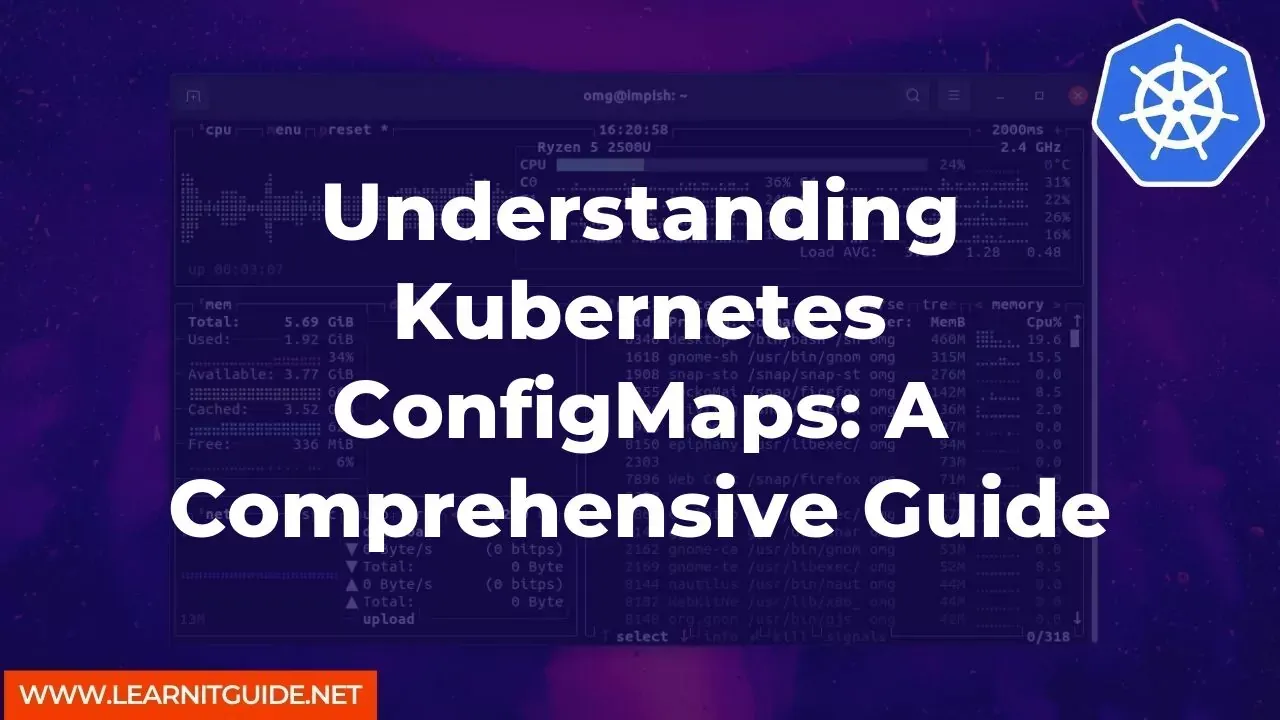Kubernetes is a powerful container orchestration tool that allows developers to automate the deployment, scaling, and management of containerized applications. One of the key features of Kubernetes is its ability to manage configuration data through ConfigMaps.
In this article, we will take a deep dive into Kubernetes ConfigMaps, what they are, how they work, and how to use them effectively.
Introduction to Kubernetes ConfigMaps
ConfigMaps are a Kubernetes resource that allows you to store configuration data separately from your application code. This data can include configuration files, environment variables, command-line arguments, or any other configuration information your application needs.
ConfigMaps can be used to configure individual containers or entire pods, and they can be used in conjunction with other Kubernetes resources like Deployments, StatefulSets, and DaemonSets.
Using ConfigMaps allows you to separate configuration concerns from application code, making it easier to manage and update configurations without changing the underlying code. ConfigMaps also provide a way to share configuration data across multiple applications and environments.
Creating a ConfigMap
Creating a ConfigMap in Kubernetes is straightforward. You can create a ConfigMap using the kubectl create configmap command and specifying the configuration data as a literal value or by referencing a configuration file.
Here is an example of creating a ConfigMap from a file:
kubectl create configmap my-config --from-file=config-file.properties
This command creates a ConfigMap named "my-config" and populates it with the contents of the "config-file.properties" file. You can also create a ConfigMap using a literal value by specifying the data directly on the command line:
kubectl create configmap my-config --from-literal=key=value
This command creates a ConfigMap named "my-config" with a single key-value pair.
Using a ConfigMap
Once you have created a ConfigMap, you can use it in your application by referencing it in your container or pod specification. You can do this by adding a volume mount to your container specification and referencing the ConfigMap data in the volume mount.
Here is an example of adding a ConfigMap volume to a container:
apiVersion: v1
kind: Pod
metadata:
name: my-pod
spec:
containers:
- name: my-container
image: my-image
volumeMounts:
- name: config-volume
mountPath: /config
volumes:
- name: config-volume
configMap:
name: my-config
In this example, we are creating a pod with a single container and adding a volume mount to the container. The volume mount references the "config-volume" volume, which is defined in the pod specification. The "config-volume" volume is defined as a ConfigMap volume, and it references the "my-config" ConfigMap.
Once you have added a ConfigMap volume to your container or pod, you can reference the ConfigMap data in your application using the file system path specified in the volume mount. For example, if you mounted the ConfigMap at "/config", you could access the data in the ConfigMap by reading the files in the "/config" directory.
So, Kubernetes ConfigMaps are a powerful tool for managing configuration data in your containerized applications. By using ConfigMaps, you can separate configuration concerns from application code, making it easier to manage and update configurations without changing the underlying code. With the examples and instructions provided in this article, you should now have a good understanding of how to create and use ConfigMaps in Kubernetes.
Related Searches and Questions asked:
That's it for this post. Keep practicing and have fun. Leave your comments if any.








0 Comments